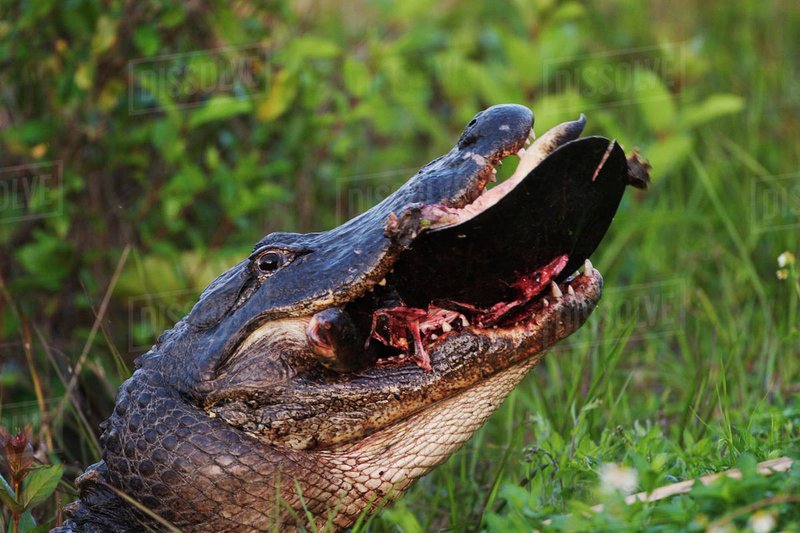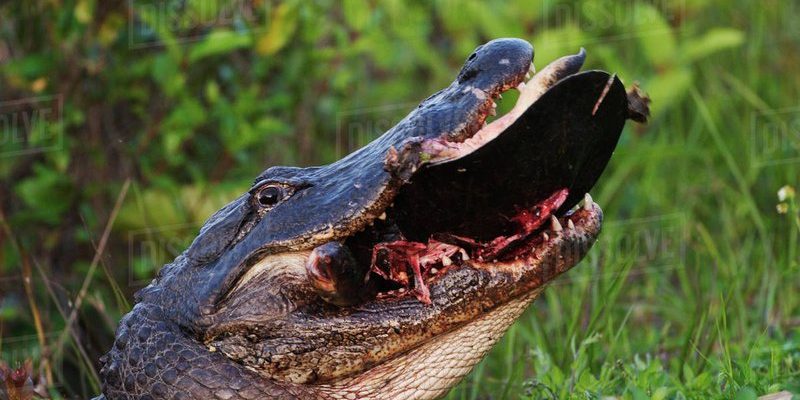
Alligators primarily reside in freshwater environments like swamps, rivers, and lakes, and their hunting techniques are tailored for these habitats. Whether you’re curious about whether they prefer fish or birds or how they actually manage to catch their prey, let’s dive into the world of alligator eating habits and hunting strategies.
What Do Alligators Eat?
Alligators have quite the varied menu. Their diet mainly consists of:
- Fish: They love to snack on all kinds of fish, from small minnows to larger species.
- Birds: Many alligators hunt birds that make the mistake of getting too close to the water.
- Mammals: They are known to munch on mammals like raccoons, deer, or even livestock when they get the chance.
- Reptiles: Yes, alligators are known to eat smaller reptiles, like turtles and other smaller alligators.
Honestly, their flexibility in diet is crucial for survival. Depending on what’s available in their environment, they’ll adapt their eating habits. If fish are plentiful, they’ll feast on those, but if not, they aren’t above catching a bird or two. This ability to switch up their meals helps them thrive in various ecosystems.
How Alligators Hunt
Alligator hunting methods are nothing short of impressive. These stealthy creatures have developed unique strategies that make them formidable predators. Here’s how they do it:
- Ambush: Alligators often use a technique called “ambush hunting.” They lie in wait, camouflaged by their surroundings, and then suddenly strike when a meal comes close.
- Swamp Stalking: In shallow water, they can quietly glide along, blending in with the vegetation, which allows them to get very close to their prey without being noticed.
- Death Roll: Once they have a tight grip on their prey, they can perform what’s known as a “death roll.” This technique helps them disorient and drown their catch, making it easier to eat.
You might be wondering how all this plays out in real life. Picture this: it’s early morning, and an unsuspecting bird lands near the water’s edge. An alligator lies still, barely breaking the surface. With a sudden burst of energy, it lunges out, catching the bird off guard. This swift, calculated movement is typical behavior, showcasing both patience and speed.
The Role of Environment in Hunting
The alligator’s hunting success often depends significantly on its environment. Here’s why the location matters:
- Water Depth: Alligators prefer shallow waters where they can hide and ambush their prey. Deeper waters make it harder for them to stalk effectively.
- Vegetation: Dense vegetation provides excellent hiding spots for alligators. Water lilies, reeds, and thick grasses create the perfect cover.
- Time of Day: Alligators are generally more active at dawn and dusk. During these times, their prey is also active, making it easier to find a meal.
Here’s the thing: an alligator is like a master chess player, always considering the best possible moves based on its surroundings. If the water is too deep or too clear, they might decide to wait for a better opportunity.
How Alligators Use Their Senses
While alligators have a reputation for being tough hunters, their ability to catch prey is also due to their exceptional senses. Let’s break down how they use these senses:
- Vision: Alligators have excellent night vision, which helps them see in low light conditions. Their eyes are positioned on the top of their heads, allowing them to watch for prey while remaining mostly underwater.
- Hearing: They have sensitive ears that can pick up the slightest sounds, whether it’s the splashing of a fish or the rustling of birds in the reeds.
- Touch: Alligators have sensitive skin, particularly around their jaws. This sensitivity helps them detect vibrations in the water, alerting them to the presence of prey.
Imagine you’re trying to sneak up on a friend playing hide and seek. If you can hear them moving or rustling leaves, you have a better chance of finding them. Alligators operate the same way, using their heightened senses to track down dinner.
Seasonal Changes in Diet
The alligator diet can shift with the seasons, much like how humans might crave hearty meals in winter and lighter options in summer. Here’s how their eating habits change throughout the year:
- Spring: As temperatures rise, so does the activity level of prey. Alligators often hunt more frequently during this time, taking advantage of the abundance of food.
- Summer: With warmer weather, fish and other prey are plentiful, making it a peak season for alligator hunting. They’re often seen basking in the sun after a successful meal.
- Fall: As the weather cools, some animals migrate, and alligators may need to adapt their hunting strategies to find food.
- Winter: In colder months, alligators become less active and may eat less frequently. They often go into a state of dormancy, requiring fewer meals.
When you think about it, just like us, alligators must adjust to the changing availability of food. If food becomes scarce, they’ll conserve energy and hunt less often.
Alligators are remarkable creatures with intricate hunting techniques and diverse diets. Their ability to adapt, whether it’s changing what they eat or adjusting their hunting strategies with the seasons, highlights their skill as predators. As they play a crucial role in their ecosystems, keeping populations of other animals in check, it’s important we respect their habitat and understand their nature.
So, the next time you hear about an alligator in the wild, remember that beneath that tough exterior lies an intelligent hunter with a rich diet and a critical role in the balance of nature.

